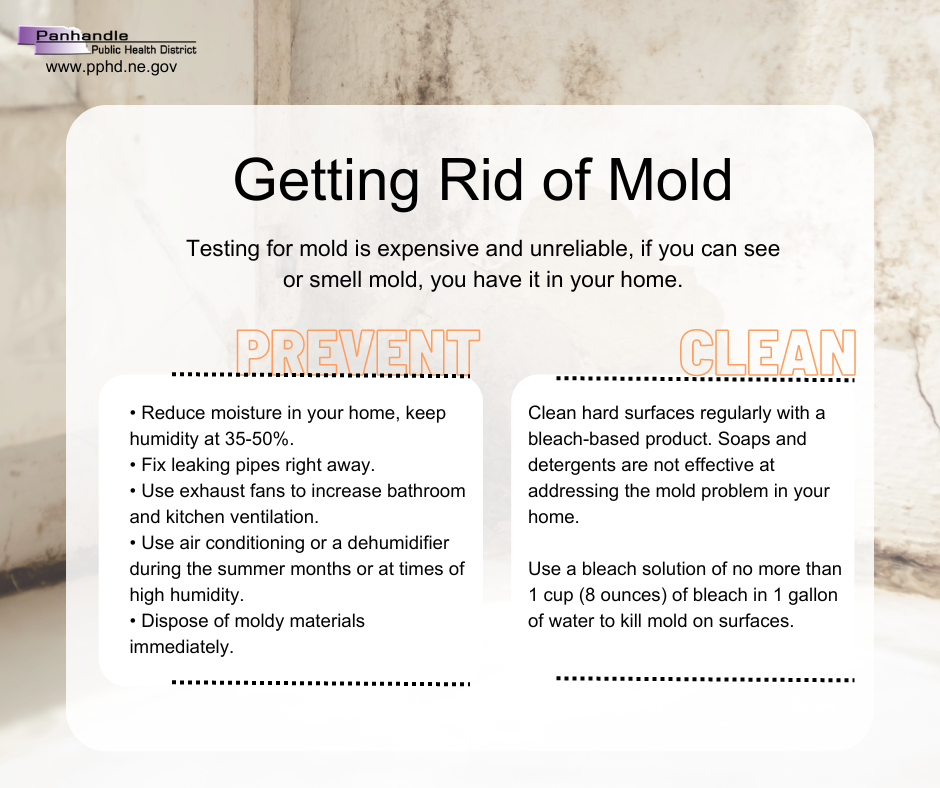![]()
The air we breathe is essential to living a healthy life. Understanding what can affect your air quality can ensure that you are taking all the necessary steps to keep your home and family healthy. This is part two of a three-part series on air quality to help address some common issues that can occur that affect your air indoors and out.

Let’s Talk About Mold
Molds are very common in buildings and homes and can be found indoors and outdoors. Mold can enter your home through open doorways, windows, vents, and heating and air conditioning systems. Mold will grow in places with a lot of moisture such as:
- Areas where there are leaks in the roof
- Windows
- Pipes
- Where there has been flooding
Large mold infestations can usually be seen or smelled. Mold growing in homes and buildings indicates that there is a problem with water or moisture. The first problem to address: Removing moldy items from living areas.
Once mold starts to grow in carpet, insulation, ceiling tiles, drywall, or wallboard, the only way to deal with the problem is by removal and replacement. It is important to properly clean and dry the area as you can still have an allergic reaction to parts of the dead mold and mold contamination may recur if there is still a source of moisture.
Here are some quick answers to frequently asked questions on mold:
- Mold is very common in buildings and homes.
- Mold is found both indoors and outdoors.
- Large mold infestations can usually be seen or smelled.
- There is no recommended routine sampling method for mold.
- There are no sampling standards for mold. It can be costly to get a test done and there are not set levels for what is an acceptable quantity.
- If you believe you are ill because of exposure to mold in a building, you should consult your physician to determine if you need to vacate.
Health Effects of Mold
Exposure to damp and moldy environments may cause a variety of health effects, or none at all. Some people are more sensitive to mold than others. For these people, exposure to molds can lead to symptoms such as stuffy nose, wheezing, and red or itchy eyes and/or skin. Typically those with allergies are the most sensitive to mold.
Severe reactions may occur among workers exposed to large amounts of mold in occupational settings, such as farmers working around moldy hay. Symptoms may include fever and shortness of breath. There is no blood test for mold. Some physicians can do allergy testing for possible allergies to mold, but no clinically proven tests can pinpoint when or where a particular mold exposure took place.
What to Look for and How to Clean
Mold growth, which often looks like spots, can be many different colors, and can smell musty. Color is not an indication of how dangerous a mold may be. Any mold should be removed and the moisture source that helped it grow should be removed.
If you can see or smell mold, a health risk may be present. You do not need to know the type of mold growing in your home, and there is no recommended test for checking for mold. No matter what type of mold is present, you should remove it.
Mold growth can be removed from hard surfaces with commercial products or a bleach solution of no more than 1 cup (8 ounces) of bleach in 1 gallon of water to kill mold on surfaces. Never mix bleach with ammonia or other household cleaners.
Inside your home you can control mold growth by:
- Controlling humidity levels by keeping it between 30%-50% all day long.
- Promptly fixing leaky roofs, windows, and pipes.
- Thoroughly cleaning and drying after flooding.
- Ventilating shower, laundry, and cooking areas.
To sign up for PPHD’s news releases, click here or visit www.pphd.ne.gov. Panhandle Public Health District is working together to improve the health, safety, and quality of life for all who live, learn, work, and play in the Panhandle. Our vision is that we are a healthier and safer Panhandle Community. Visit our website www.pphd.ne.gov.
